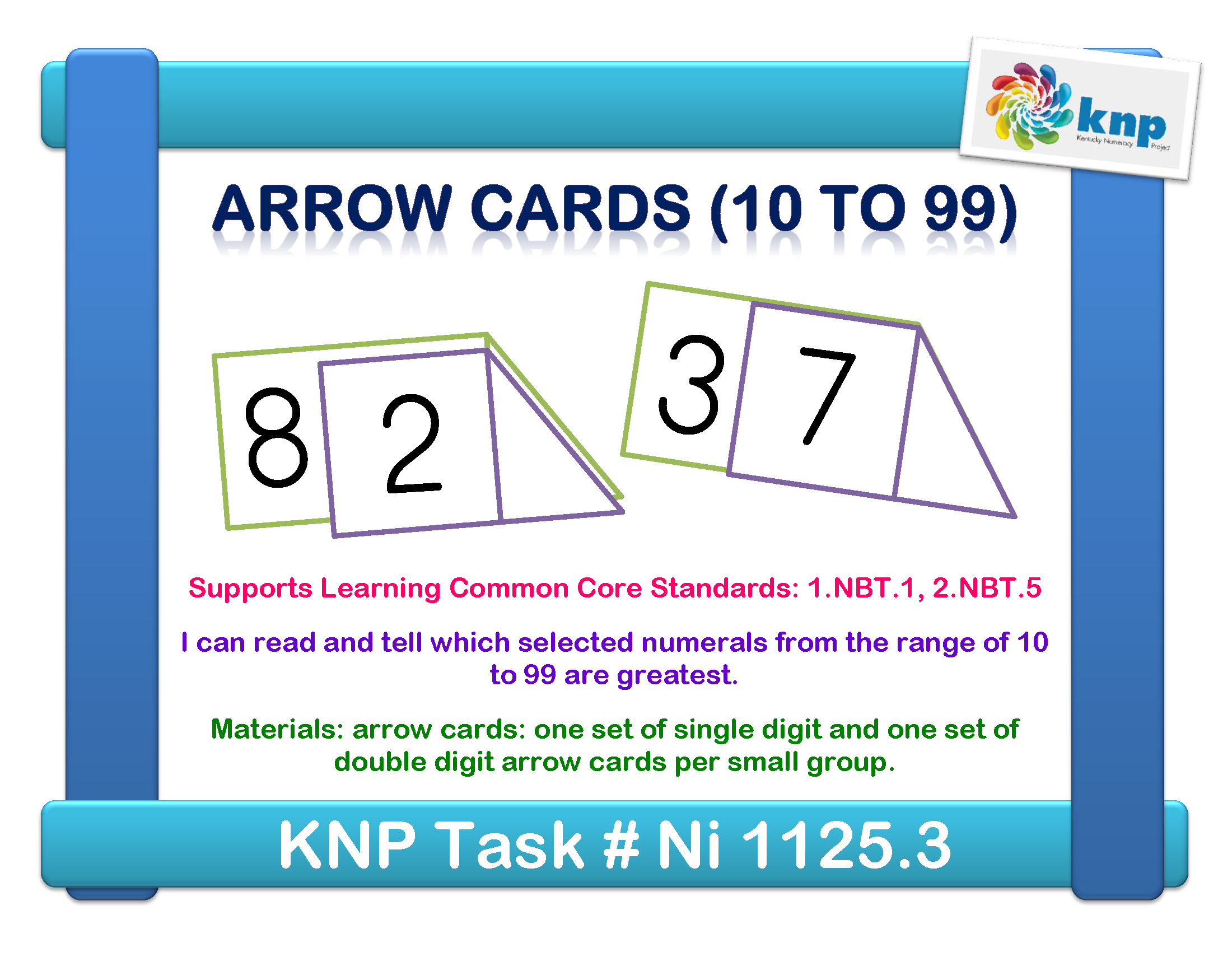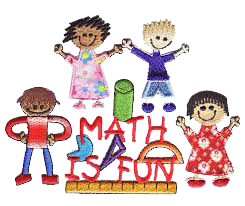"Arrow Cards (10 to 99)"
KNPIG ID #Ni 1125.3
What's this activity about?
You and your child can have a lot of fun working with arrow cards to compare while engaging in friendly competition. This activity is great for up to five players. You will be drawing two arrow cards per player and comparing values. The player who drew the greatest value gets a point. After each turn, replace the cards in the stack, shuffle and draw again.
What materials do we need?
Arrow cards: one set single digit numeral cards and one set of double digit arrow cards

How do we play?
Place single digit arrow cards in one stack face down and place the double digit arrow cards in another stack face down. Draw one arrow card from each stack; place the cards together to make a number. Read the number. Then, work together to put the numbers in order.
Where’s the Math?
There’s a lot of math in this activity that goes along with what your child is learning in school. You will practice comparing the numbers on the arrow cards you draw. Children should know that the numerals represent different quantities and be able to tell which quantity is greater. This is an important developmental step in learning basic math principles.
They are now moving on to applying those skills to counting larger numbers. Students should still be able to identify what the number is called and also compare them to the other larger numbers. Your child will be ordering more than two numbers beyond single digit and teens numbers. They will build on this skill when learning how to add and subtract these larger numbers.
Things to Think About:
As always, when working with children remember to be patient. Your child may have trouble at first and it’s hard not to help them along. Lay out all the arrow cards first and have your child name them. Then put them in order. Use words such as “less” and “more” instead of “first” and “next”. This will help them relate values to the numerals, instead of just ordering them like letters.
When working with tens and ones arrow cards, lots of modeling may be necessary at first. You will be building numbers with a ten value arrow card and a one value arrow card. The arrows on the right side of the cards will line up to make a two digit number. Then, it is easier to tell which number is greater by looking at the tens arrow card first, then the ones arrow card. You can practice with the arrow cards by asking them to build a specific number before you start the activity. Your child could also work independently on this activity by choosing three to five numbers on their own. They can then build and order those numbers by themselves.
This activity relates to real life in many ways. You can talk about values when shopping and refer back to this activity. Ask your child what costs more so you know which item to buy. You can also ask them which digit represents more in the price of an item. If something costs 59 cents, see if they determine if the five digit or the nine digit has a greater value. You can apply these questions to other situations such as sports games, distances and ages of family members. This is a good way to make this math fun and relatable!
Feedback
Send us your thoughts and ideas about these activities. Email the KCM

